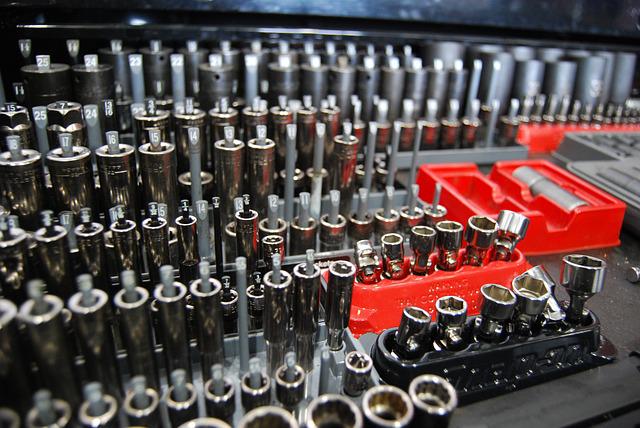
A car restorer works with classic cars. They may be Detail Doctor or forward-thinking, as well as being Concours-ready. It all depends on what you are looking for. These are the four main types of car restoration. You may want to choose one based on your tastes or your budget. However, make sure that you select someone with a keen eye to detail. These restorations aren't just for collectors. They can make your car appear brand new again!
Detail Doctor
The Detail Doctor is an innovative product that restores cars' beauty. It's a car wash and detailing product that uses oil from linseed to clean and recondition upholstery and paint. Linseed oils are highly flammable, and can cause spontaneous ignition of materials. This product is made by the American company Detail Doctor. You can find more information about Detail Doctor by visiting their website.

Concours Ready
Concours Ready means a car that has been restored to its original glory and is of the highest quality. Concours d'Elegance entries are not mandatory, but it is worth the effort to obtain this distinction. A Concours Ready car restorer meets the highest quality standards and will exceed the quality level of the original manufacturer. The car must be ready to go for the Concours with minimal damage and filler.
Classic car purists
There are two types classic car restorers. The first is purists, the second is forward thinkers. While the former are more concerned with restoring original cars, the latter embrace modern technology and incorporate innovation. Although a classic car is beautiful to drive and a great looking vehicle, it might not be the best choice for everyday use. There is no clear cut winner, but both groups can enjoy the rewards of classic car ownership. Learn more about each type.
Forward-thinking restorers
You can choose to follow traditional methods, or you can embrace new technologies and innovations. Traditionalists are those who restore classic cars using traditional methods. They focus on restoring the car in its original state, while forward-thinking car restorers use modern tools and techniques to improve the quality of the work. When choosing a classic restoration specialist, there are some important things to remember. These include: * Before you make a purchase, always inspect the vehicle's condition.

Restoration cost
It is important to estimate the cost of parts and labor when you are looking to restore an old car. If you plan to do the work yourself, the cost will be less than if you hired a professional. The price will go up if the job is more complicated. Restoring a car can cost anywhere between $500 and $5,000 depending on its age.
FAQ
Does it matter what college I go to?
Non, really. There's no difference between colleges regarding getting into the automotive industry. Some schools have better programs than others, so you might want to look elsewhere if your goal is something more specialized.
What qualifications is required to become an mechanic?
To become a technician, you will need to pass a series exams. These exams include:
-
A general knowledge test
-
A practical exam
-
An apprenticeship test
These tests are designed to ensure that you understand the basic concepts of mechanical engineering and physics before you start working as a mechanic.
Once you've passed these tests, you'll be eligible to work as a mechanic. You will still need to complete an apprenticeship. This will involve training in the trade.
To learn all you can about vehicle repair, you will need to take classes and workshops. You'll also have to work alongside experienced mechanics.
For mechanic success, you'll need to be focused and meticulous. Vehicle repairs require you to be very attentive.
To be a successful mechanic, you will need patience and perseverance. If you don’t like following directions, then this career path may not suit you.
If you enjoy cars and fixing them, this job could be a good fit for you.
How can I prepare for a apprenticeship as a mechanic?
It is important that you understand the ramifications of your actions. Understanding the mechanics and working of cars is essential. This will help you to plan your first day in the garage.
You also need to know how to fix simple problems such as broken lights, tires, etc.
This will teach you how to diagnose problems and fix them yourself.
It is also important to know how the different pieces fit together in order to put them together again.
Finally, be proficient in using tools safely and efficiently.
These things will enable you to be a competent mechanic.
Is it hard to get work as an auto mechanic?
Yes, it is possible. Many garages advertise their vacancies online, and many people apply just because they think it might be fun. Try applying to a few jobs and seeing if the garages accept student applications. Ask your friends and family to recommend anyone in the field. You might be able to refer someone.
Statistics
- According to the BLS, the median annual salary for automotive service technicians and mechanics in the United States was $44,050 in May 2020. (uti.edu)
- Apprentice mechanics earn significantly less hourly than mechanics who have completed training, with a median wage of approximately $14.50 an hour, according to PayScale. (jobhero.com)
- The U.S. Bureau of Labor Statistics (BLS) reports that the job outlook for automotive service technicians and mechanics is expected to decline by 4% from 2019 to 2029. (indeed.com)
External Links
How To
How to properly diagnose your vehicle for repair
Before you can determine if your car requires repairs, it's important to first analyze the symptoms. You can then follow these steps for a proper diagnosis of your vehicle.
-
Check engine lights. Inspect the dashboard light indicators. These include the engine lights, the oil pressure gauge and the battery light indicators. The RPM gauge and coolant temperature gauge should also be checked. If they have been flashing for more days than usual, it could be a sign that something is wrong with the vehicle.
-
Check the treads of your tires. Tires with worn treads could cause problems when handling or braking. You should also inspect the wheel treads. They should be clean, and they should be smooth. You can do this by taking off the wheels. To check the condition of your treads, use a flashlight.
-
You should always monitor the level brake fluid. You must always monitor the level of your brake fluid. This will ensure that your brakes run smoothly. If the brake fluid level is low, your brakes might fail when you apply pressure to them.
-
Test the suspension system. A suspension system is designed to absorb vibrations and shocks. It allows for better control, smooth acceleration, and deceleration. It might feel uncontrollable or wobbly if your vehicle is suffering from a suspension problem. If you are unsure if your vehicle is suffering from a suspension problem, put weight on the front and rear axles to check the movement.
-
Examine the steering column. Steering columns are used to connect the steering wheel to the rest of the vehicle's components. The steering column can often be damaged by an accident. Replace it if your steering column feels loose or unsteady.
-
Observe the exhaust pipe. Exhaust pipes move gases from combustion chamber to atmosphere. You can let harmful fumes into your home if your exhaust pipes crack or leak. Additionally, your tailpipe should be fixed immediately if it is bent.
-
Check under the hood. To check for unusualities, look under the hood. There could be fluid leaking from your engine. In addition, if you notice an unusual smell coming from your engine compartment, you should contact a professional technician.
-
It is important to inspect the air filter. The outside environment can collect dust and other debris in your vehicle's air filters. Your vehicle will run less well if it has a dirty filter. Replace your air filter regularly.
-
Check the fan belt. The fan belt that connects your vehicle to the transmission is called the engine fan belt. If the fan belt fails, the engine won't start. It is easy to replace the belt. All you need to replace the belt is a screwdriver with pliers.
-
You should inspect the radiator and hoses. The radiator-hose carries water to the engine. It can crack or become damaged and leak hot liquid onto an engine. You only need a pair of needle-nose pliers and a small wire brush to repair the hose.
-
Make sure you have the windshield wipers checked. Windshield wipers use electricity to wipe away rain and snow. If they stop working, they could leave streaks on your window glass. Simply change the washer oil to fix the problem.
-
Make sure you check the cables. Your car's electrical system is powered by batteries. Always disconnect the negative wire before you replace batteries. Failure to do so can damage your alternator.
-
Check the headlights. The headlights provide illumination for the road ahead. Poor visibility can result if the headlights don't function properly. To check if the bulbs have gone out, you can inspect them.
-
Check the lights. Lights warn other drivers when you approach them at night. It could cause distraction and even lead to an accident if it doesn't work.
-
Inspect your brakes. Brakes slow down your vehicle before a collision. You may lose control of your vehicle and crash if the brakes don't function properly.
-
Change your oil. Keep your engine lubricated with oil. It helps prevent metal parts from wearing out too quickly. It is recommended to change the oil each month.